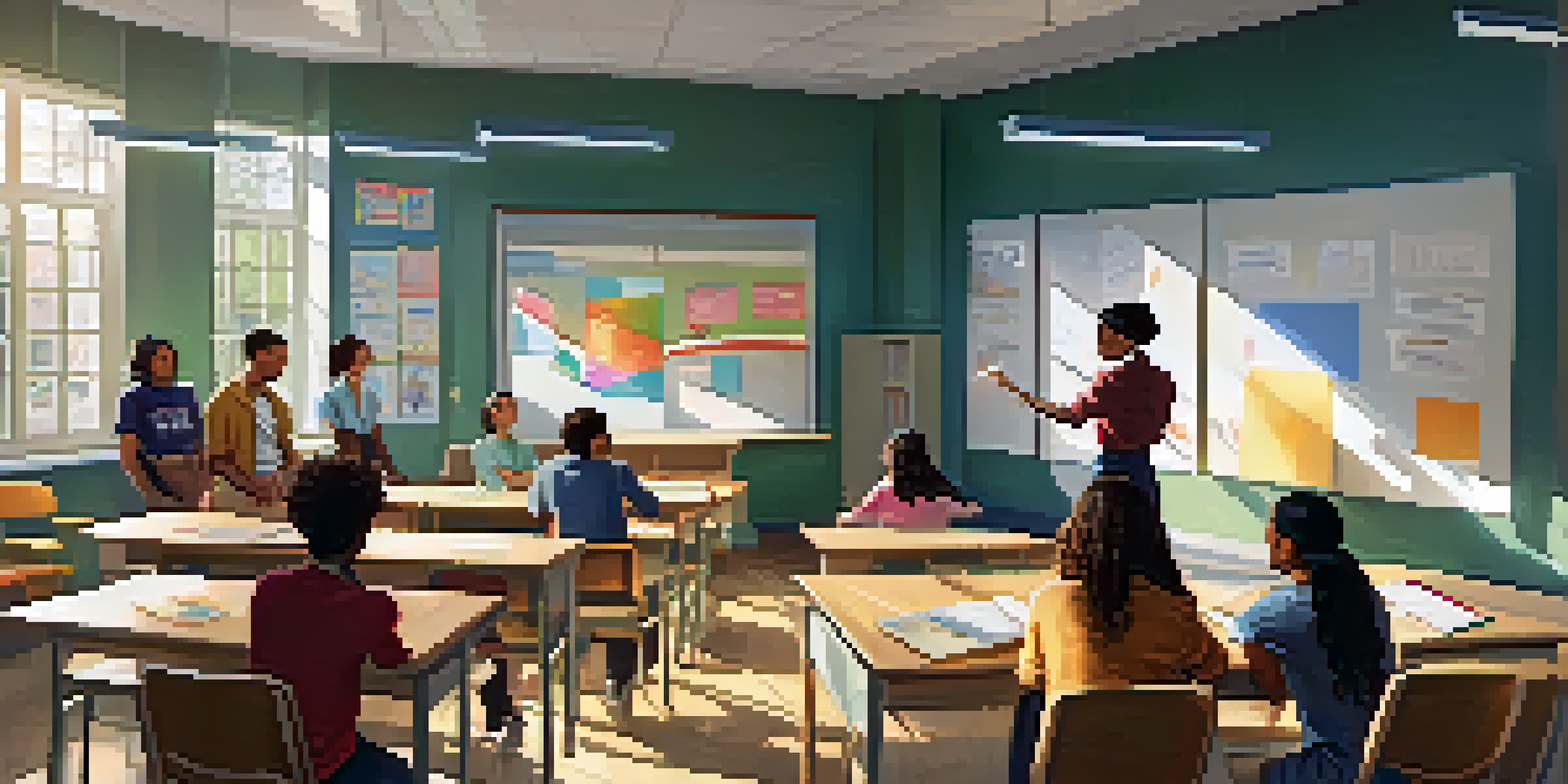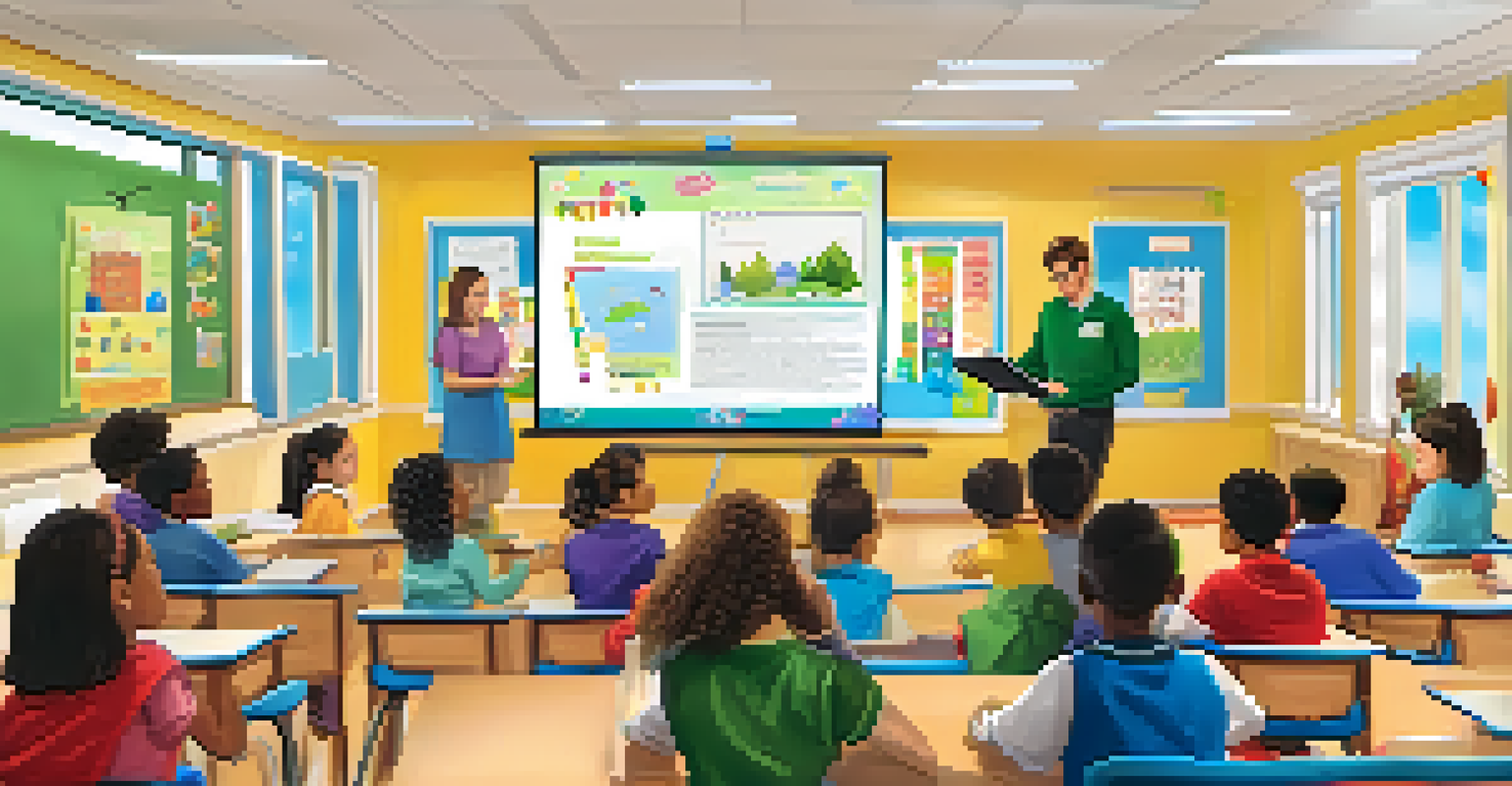Flipped Classrooms: A New Approach in LA Education

Understanding the Flipped Classroom Concept
At its core, a flipped classroom is an innovative educational model that reverses traditional teaching methods. Instead of introducing new concepts during class, students learn the material at home through videos or reading assignments. This allows classroom time to focus on discussion, problem-solving, and collaborative activities.
Education is not the filling of a pail, but the lighting of a fire.
Imagine coming home from school, watching a video lecture in your pajamas, and then diving into engaging group projects with your classmates. This approach caters to various learning styles, giving students the chance to absorb material at their own pace. It turns the classroom into a dynamic environment where teachers act more as facilitators than lecturers.
The flipped classroom model encourages active learning and promotes a deeper understanding of subjects. By shifting the focus from passive reception to active engagement, students are often more motivated and involved in their education.
The Rise of Flipped Classrooms in Los Angeles
In recent years, Los Angeles has seen a growing interest in flipped classrooms as educators search for ways to enhance student engagement and performance. With the advances in technology and the increased accessibility of online resources, many schools have adopted this approach. The result is a more personalized learning experience that meets the diverse needs of students.

As LA schools embrace this model, teachers are discovering new methods to connect with their students. For example, some educators create custom video lessons tailored to their classroom's unique challenges. This local adaptation not only empowers teachers but also helps students feel more connected to the material.
Flipped Classrooms Enhance Learning
The flipped classroom model shifts traditional teaching, allowing students to learn at home and engage actively during class.
The shift toward flipped classrooms also coincides with broader educational reforms in Los Angeles, focusing on improving equity and access to quality education. By leveraging technology, schools aim to bridge gaps and provide all students with an opportunity to succeed.
Benefits for Students and Teachers
One of the most significant advantages of the flipped classroom model is its ability to foster independent learning among students. With the flexibility to learn at their own pace, students can revisit complex topics as needed, creating a more tailored educational experience. This self-directed approach often leads to increased confidence and improved academic performance.
The goal of education is the advancement of knowledge and the dissemination of truth.
For teachers, the flipped classroom allows for more meaningful interactions with students. Instead of spending valuable class time delivering lectures, educators can focus on facilitating discussions, answering questions, and guiding hands-on activities. This shift not only enhances teacher-student relationships but also encourages collaborative learning.
Moreover, flipped classrooms can help address various learning styles and needs, making education more inclusive. Teachers can leverage diverse resources to support students who may struggle with traditional methods, resulting in a more comprehensive understanding of the subject matter.
Challenges of Implementing Flipped Classrooms
While the flipped classroom model offers numerous benefits, it does come with its own set of challenges. One of the primary obstacles is ensuring that all students have access to the necessary technology and internet resources at home. Schools in lower-income areas may face difficulties in providing equitable access, which can hinder the effectiveness of this approach.
Additionally, some students may struggle with self-directed learning, requiring more guidance and structure than a flipped model typically provides. Teachers must find a balance in their instructional methods to support these students while still encouraging independence.
Technology Is Key to Success
Access to technology and online resources enables a more personalized learning experience for students in flipped classrooms.
Finally, there is the challenge of adjusting to a new teaching paradigm. Both educators and students may require time to adapt to this shift in structure, which can lead to initial resistance and uncertainty. Ongoing professional development and support can help ease this transition and ensure a successful implementation.
Real-Life Success Stories in LA Schools
Several Los Angeles schools have successfully implemented the flipped classroom model, showcasing its potential to transform education. For example, one high school reported a significant increase in student engagement and test scores after adopting this approach. Teachers noted that students were more prepared for class discussions and collaborative projects, leading to a more vibrant learning environment.
Another success story comes from a middle school that used flipped classrooms to address specific learning gaps among its students. By tailoring video lessons to focus on areas where students struggled, the school saw improved understanding and retention rates. This targeted approach allowed for more effective use of class time and meaningful interactions.
These success stories highlight the power of innovation in education. As more schools in Los Angeles embrace the flipped classroom model, they pave the way for a more engaging and effective learning experience for all students.
The Role of Technology in Flipped Classrooms
Technology plays a crucial role in the success of flipped classrooms, making it easier for students to access learning materials outside the classroom. From video lectures to interactive quizzes, the variety of resources available allows students to learn in ways that suit them best. This versatility helps to keep students engaged and motivated.
Furthermore, technology enables teachers to track student progress more effectively. With various tools and platforms, educators can monitor who has completed assignments and identify areas where students may need additional support. This data-driven approach can inform instruction and help teachers tailor their lessons to meet students' needs.
Challenges Require Careful Planning
Implementing flipped classrooms presents challenges such as ensuring equitable access to technology and supporting students' learning needs.
However, it's essential to ensure that technology is used thoughtfully and effectively. Schools must provide training for both teachers and students to maximize the benefits of digital tools, ensuring that they enhance the learning experience rather than distract from it.
The Future of Flipped Classrooms in LA Education
As the education landscape continues to evolve, the flipped classroom model is likely to play a significant role in shaping the future of learning in Los Angeles. With increasing recognition of its benefits, more schools are expected to adopt this innovative approach. This shift could lead to a more personalized and engaging educational experience for students across the district.
Moreover, as technology continues to advance, the potential for flipped classrooms will only grow. New tools and resources will emerge, making it easier for educators to create engaging content that meets the diverse needs of their students. This ongoing evolution will help ensure that the flipped classroom model remains relevant and effective.

Ultimately, the future of education in Los Angeles is bright, with the flipped classroom model paving the way for a new era of learning. By embracing innovation and prioritizing student engagement, schools can create a more dynamic and inclusive environment that prepares students for success in an ever-changing world.